You may be wondering what does sensory play have anything to do with preparing for starting solids. And the answer is everything!
I've invited Cortney, an occupational therapist and a mom of three, to offer her expert knowledge and tips in this area. She's so relatable, down to earth, and has so many practical ideas.
Here she is!
Why is sensory play important?
Let’s talk about what it takes for your baby to actually accept foods into their mouth!
Imagine only ever having had one taste with only one consistency in your mouth ever in your whole life and then on some random day someone decides to put a completely foreign substance in your mouth. Of course you would make a funny face, perhaps spit it out, mash it between your tongue and gums and/or have no idea how to even process it in your mouth.
And then just when you have been given back the comfort of your all time favorite food (milk/formula), that same person decides to make you try that foreign substance again! The nerve! Anyways, you can see why trying actual foods would be a little unnerving.
So what can you as a parent do to set your little one up for success in this new venture? As you may have guessed it starts several months before your baby actually sits down to eat. If you haven’t figured it out already, babies put (or at least try to put) everything in their mouths.
You may be asking why they do this? Their mouth is where a huge portion of their exploring the world starts. Through their hands babies learn to reach, grab, grasp, maintain that grasp, manipulate (and then probably drop it only to start the whole process over again).
All these little skills add up to being able to combine a gross motor function (reaching) into a fine motor (grasping and manipulating) into a goal directed behavior of getting an object into their mouth.
Through this process they can learn how to use these 5 clumsy projections (fingers) that extend off their equally clumsy arms to actually achieve a goal! Putting something in their hands and then their mouth allows them to figure out the taste, the texture, the consistency and even the smell.
Even if your baby is not ready to put things into their mouth, just the exposure of putting it into their hands introduces them to the texture, weight and consistency of an object.
How to encourage exploration at 4-6 months
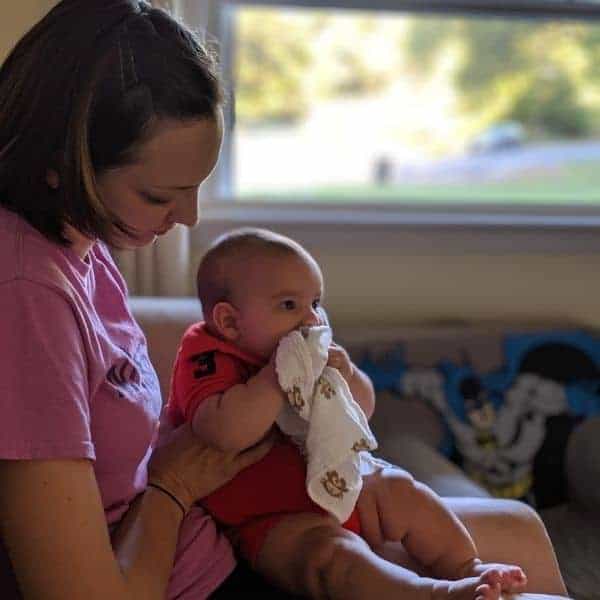
Don't overcomplicate!
In the months that lead up to actually putting food in their mouth, you should be open to letting your little one explore a wide variety of textures from common household objects.
Teethers definitely have their place and purpose in oral motor development (here's a super helpful video), especially for kiddos that might need a little extra help but also consider some of the things you already have in your house. That same spatula you use to make brownies at 2 in the afternoon as a pick me up, your baby would love to explore. It has the perfect handle for little hands to hold and a soft enough texture for them to try to put in their mouth safely.
Same thing goes for your beloved wooden mixing spoons. In a hushed reverent tone I will dare to mention the all time most beloved of beloved… the whisk. Oh the possibilities of trying to fit that tongue in between all the crannies.
Look around your house. What can your baby safely handle putting in their mouth that might introduce them to a different texture or temperature?
A washcloth or burp cloth? What if you used a damp washcloth straight out of the fridge? Not only is the excellent introduction to a different sensation in the mouth, it is also a super secret teething hack. My second son had 8 teeth by the time he was 6 months old so ask me about all my favorite teething tricks!
Ok back to the common household items to introduce to you baby. What about those play colorful scarves that are all the rage on colorful mommy/toy blogs. They are slippery and soft and provide lots of opportunities to play peek a boo that babies love so much. Try sticking them in a paper towel roll with it peeking out. How fun would it be to be able to pull out colorful scarves?!
What about the straw cup you are hoping they will someday drink from? It probably has nice handles and a squishy straw that would be really fun to squeeze between gums. Even the tupperware or plastic has interesting grooves and textures. Usually the best toys are the things you already have.
Some of these other objects might jog your memory for random things you have tucked away in you the back corners of your home:
- Different kinds of fabrics
- Fur
- Tissue
- Velvet
- Sponges
- Feather (that is hopefully clean 🙂
- Outside textures including grass, bark, leaves etc. (Maybe even dirt…)
Specific item suggestions
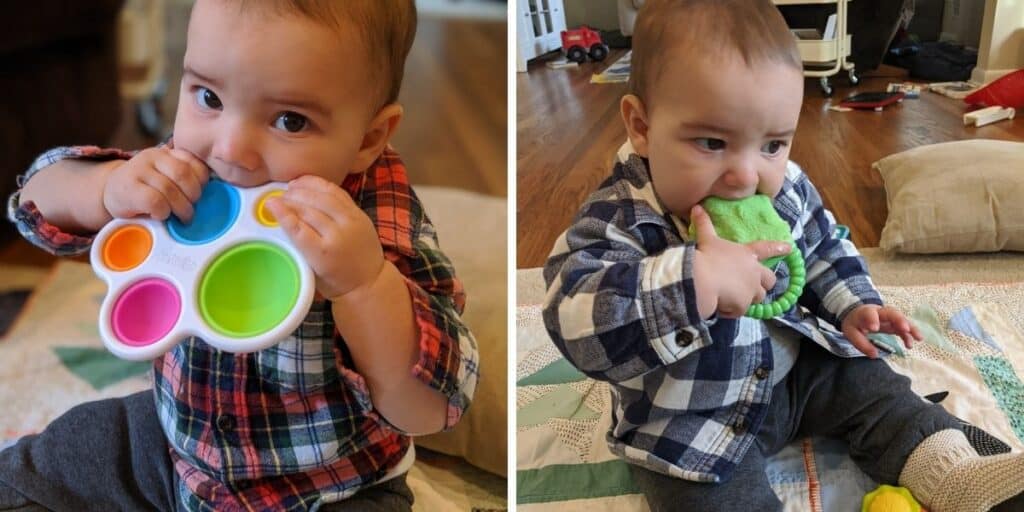
Full disclosure: these are affiliate links meaning I receive a small commission from the company if you make a purchase. As always, I only share products that I love and have found success with.
- Banana Massaging Toothbrush - I really liked this one because it provided a nice mild introduction to texture but also had easy to grab bilateral handles allowing for both hands to come to midline to hold it
- Nuk brush - cleans their teeth and is super fun to chew on
- Comotomo silicone baby teether
- Oral motor tool therapy
- Pre-spoon Gootensils - these are the best first spoons for learning to self feed but also provide a fun texture) You will automatically get 20% discount if you purchase using this link
- Links - these serve a double purpose of being able to attach toys to the fridge as I mentioned earlier, but also have interesting textures in an easy to grab shape
- Tissue Box - multiple textures, different sounds and begins to work on the concept of object permanence, triple win!
- Peacock
- Simple sensory toy
If your baby is around 6 months of age or older and have started solids, have fun incorporating sensory play using all kinds of textured foods! There are so many benefits to messy eating, and it can especially be helpful if your baby refuses to touch food or seems disinterested in eating.
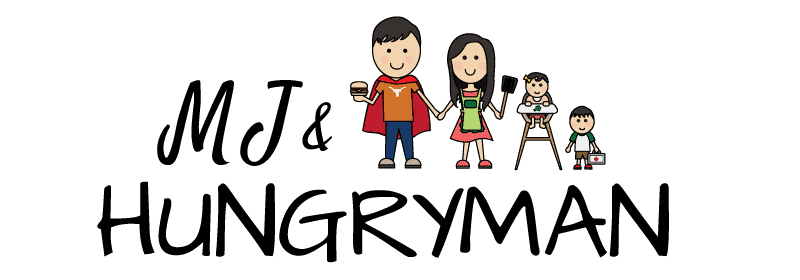
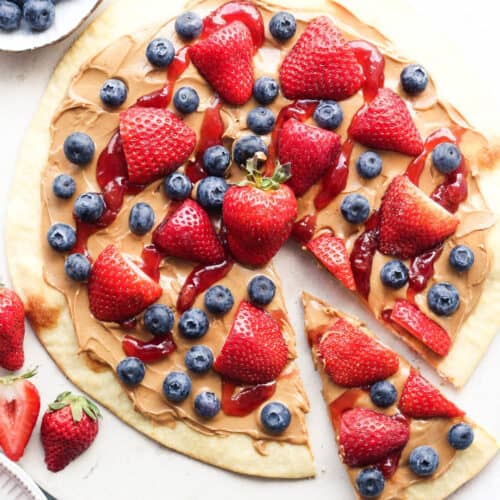
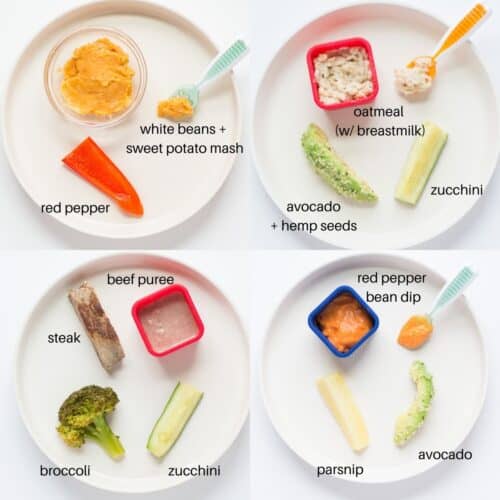
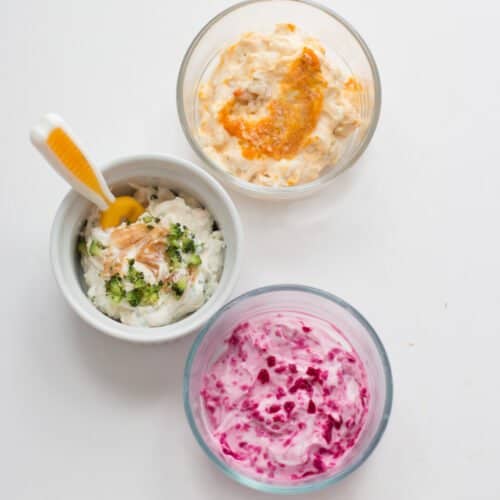
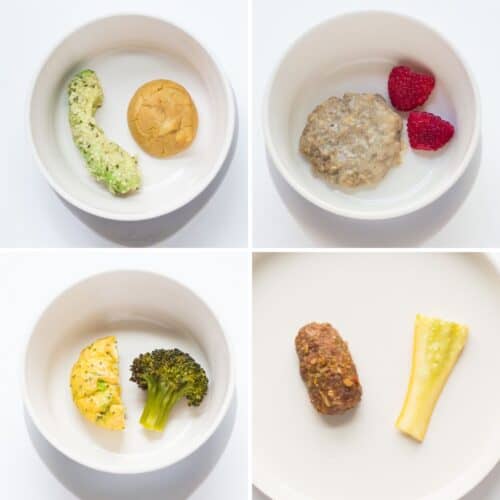

Leave a Reply